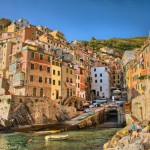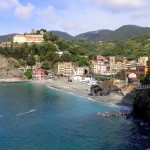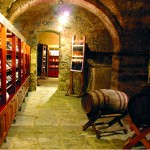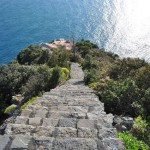A slow tour from Riomaggiore to Manarola and Monesteroli
Discover Cinque Terre, a living landscape
A special place in Liguria, UNESCO world heritage since 1997
by Patrizio Roversi.
“The Ligurian shore between the Cinque Terre and Porto Venere has got a big value from an environmental and cultural point of view, and it represents the armonious interaction between man and environment, that creates a landscape of exceptional quality. It shows a traditional way of living, existing for hundreds years, and that keeps playing an important socioeconomic role in the life of the community.”
This is the reason why Cinque Terre – the part of the shore after the gulf of La Spezia, including the towns of Riomaggiore, Manarola, Corniglia, Vernazza and Monterosso al Mare – has been included in the list of UNESCO World Heritage Centre in 1997.
Actually the first thing that stroke me about the Cinque Terre is the landscape: mountains jumping into the sea, small towns nestled in the rocky shores, the small drystone walls, Sanctuaries, forests. But it is also something that needs to be understood and interpreted. It has been defined as a living landscape. Man and Nature live together forming a society. The nature created this place, and men gave it a shape and they are preserving it.
In 1999 the National Park of Cinque Terre was founded. It is considered one of the most advanced in Europe. The parc has several functions: not only to safeguard the territory, but also the management of the small train stations passing through there and of kindergartens and elderly care, and in addition the promotion of typical products. This parc is quite small (approximately 4,000 hectars), with 4,500 inhabitants, and visited (even if someone would say invaded) by more than 2 millions and a half of tourists each year. A part of them (the wise one) go there by train, the other one (less wisely) tries to reach iy by car. A consistant number of tourists comes also by ferry.
The National Park keeps promoting agriculture, which has been gradually abandoned starting from the 60s, and it attempts to preserve the area from the real threat: boars, that eat grape, vines, and ruin the drystone walls. Talking about climate, the one of the Cinque Terre is very special. The mountains surrounding all around preserve the area from cold winds, and the sea in front guarantees mild temperatures and a lot of humidity. The ground is rocky and permeable, that keep it very healthy. In few words: a heaven for local products, with broad beans coming out in March and peas in Christmas. There is also a very long tradition of production of wine. It is known that ancient Greeks were the first to have vineyards there. Thanks to the favourable meteorological conditions, a very peculiar type of grape ripens (Bosco and Albarola‘s vineyards) and then a wine with a lot of sugar (so alcohol) is made, which ages good. Among the best wines of Cinque Terre we find the famous Sciacchetrà, a name deriving from the Latin “ex – aquare”, which means “to bring out the water”. In fact it is made with raisins (but it is not a straw wine!), and grapes are squashed one by one…
Going on a cableway monorail was an interesting experience! At first I was a bit terrified, then I realized it was safe and I looked at the breathtaking landscape overhanging the sea, and that was so moving, that fear ceased to be. I climbed until the valley called Anfiteatro dei Giganti, where they are rebuilding the small drystone walls, thanks to the cooperation of charitable associations. What the local population is stressing about, is the importance of convincing tourists to consider the Ciqnue Terre not only from the point of view of the sea, but also and especially of the hinterland. The National Park is furnished with itineraries and tourist guides. It might be hard but… after it is so satisfactory! And when you are at the restaurant ask for local products, if the waiter looks fed up, claim that you are responsible tourists, because not only the Cinque Terre, but every touristic area in Italy has so much to offer!
Patrizio
Visit Cinque Terre National Park official website
Cover pic courtesy of Flickr User Daniel Stockman














